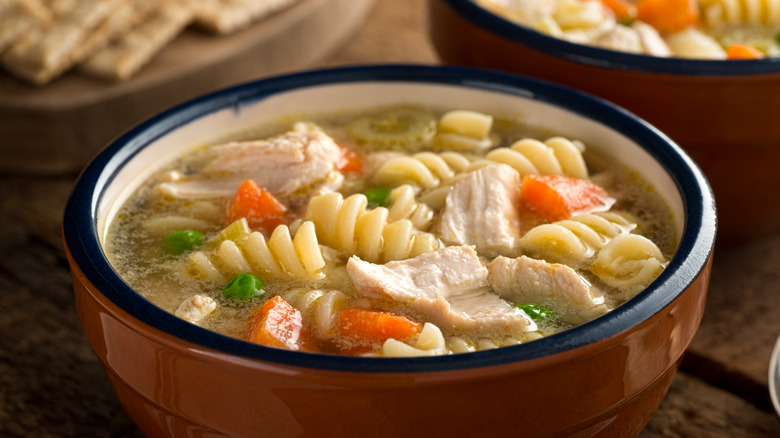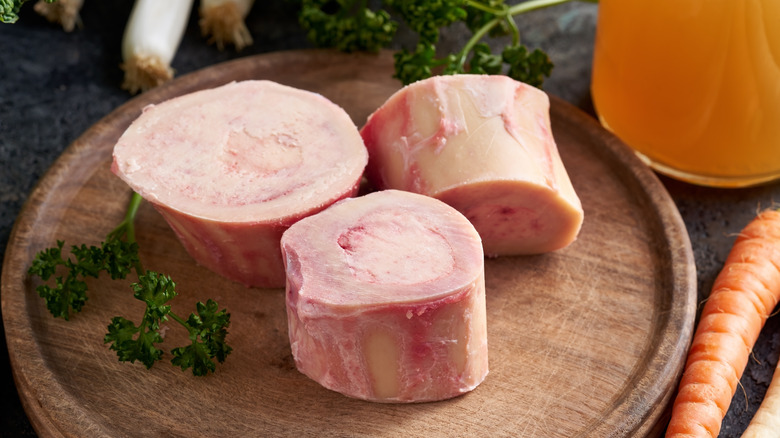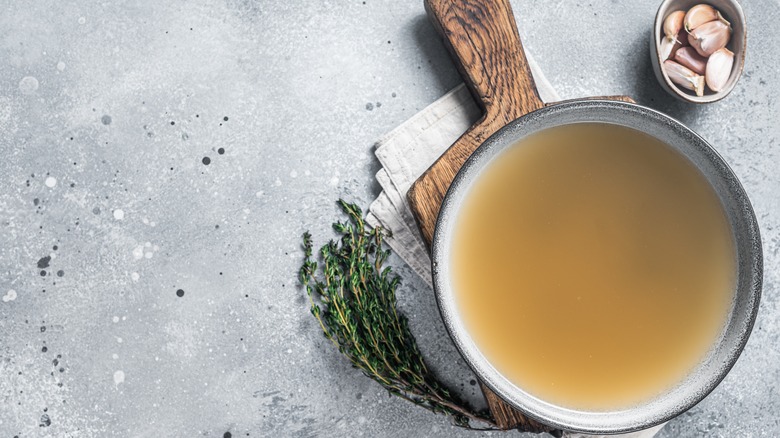Marcus Samuelsson's Broth Tip For Making The Most Flavorful Soup
Although some of us are sick of the winter months and long for the day that we can finally trade in our winter jackets for tank tops, there's still one benefit we have from all of this cold weather: soup. After all, aren't the bitter cold evenings of winter the best time to make a big pot of your favorite soup and serve it up with some nice crusty bread?
Of course, while we all have our favorites, be it chicken noodle soup or Italian wedding soup, the one thing that can separate any soup from the canned condensed stuff is the broth. It's the foundation of every soup, the stuff that your meat, noodles, and vegetables will be swimming in. Although a stock doesn't really demand any fancy ingredients to be good — in fact, the beauty of broth is that it can be made with very cheap, very common ingredients and still be as good as a "gourmet" one — it never hurts to explore different flavors. Want to try a more earthy, richer stock? Try adding roasted onions or some mushrooms as you let it boil on the stove. Feel like your stock could use a bit more bite to it? Add some cheese rind or half a cup of white wine to give the stock a subtle-yet-complex flavor. Your stock is perfect for all sorts of flavors: savory, spicy, or earthy.
But what if you want to make your stock have a meatier flavor?
Samuelsson recommends keeping meat on the bones
Many stock recipes will tell you that, if you want plenty of flavor in your stock, it is highly recommended that you add bones into the stock as it boils. It doesn't matter if it's chicken stock or beef stock — so long as you have the bones from your chicken or roast to add to it. Marcus Samuelsson offers very similar advice, although he stresses one very important detail: Don't skip on the meat.
As Samuelsson explains to McCormick, it's very important that you don't want to pull off any meat that may still be on the bones. If you have a chicken bone with some dark meat on it or a bone from a roast with some beef stuck on it, don't remove them. Instead, toss the bones and meat into the stock pot together. The combination of meat and bones together will give the stock a much meatier and richer flavor without it being too overpowering.
A very good way to do this (and a very simple way, for those who may not be too skilled in breaking down a whole raw chicken) is to simply purchase a whole rotisserie chicken. Tear the chicken apart using your choice of knife and fork or tongs and then simply take out the bones of the chicken. This way, you'll not only have pre-cooked shredded chicken ready for your soup, but you'll also have warm, fresh bones to add to the stock beforehand.
What are the best bones to use for your stock?
You may be wondering what kind of bones are the best to use in your stock. Are all bones good for stock or should you focus on a few select bones that will give you the most flavor? While some bones are better than none and you could easily improve a stock with the bones of a rotisserie chicken, you should look for bones that have more tissue and collagen to ensure you're getting the most flavor out of them.
Some good examples of these bones include knuckles, joints, feet, marrow bones — and should you be willing to try them — chicken feet. These are rich in collagen and connective tissue, which, when boiled, seeps out a very rich flavor. If you are unable to get bones or feet straight from the source, your best bet to look for them would be your local butcher, who will most likely be happy to supply you with any type of bone that you need.
Bones are such good sources of flavor, whether with meat still on them or not, that they are the reason why bone broth is so popular. This type of broth is praised not just for its flavor, but also its restorative and healthy properties, ranging from easing joint pain to promoting better sleep and weight loss. Although some of these properties do warrant a bit more research, bone broth still remains a delicious and nutritious meal in itself.


